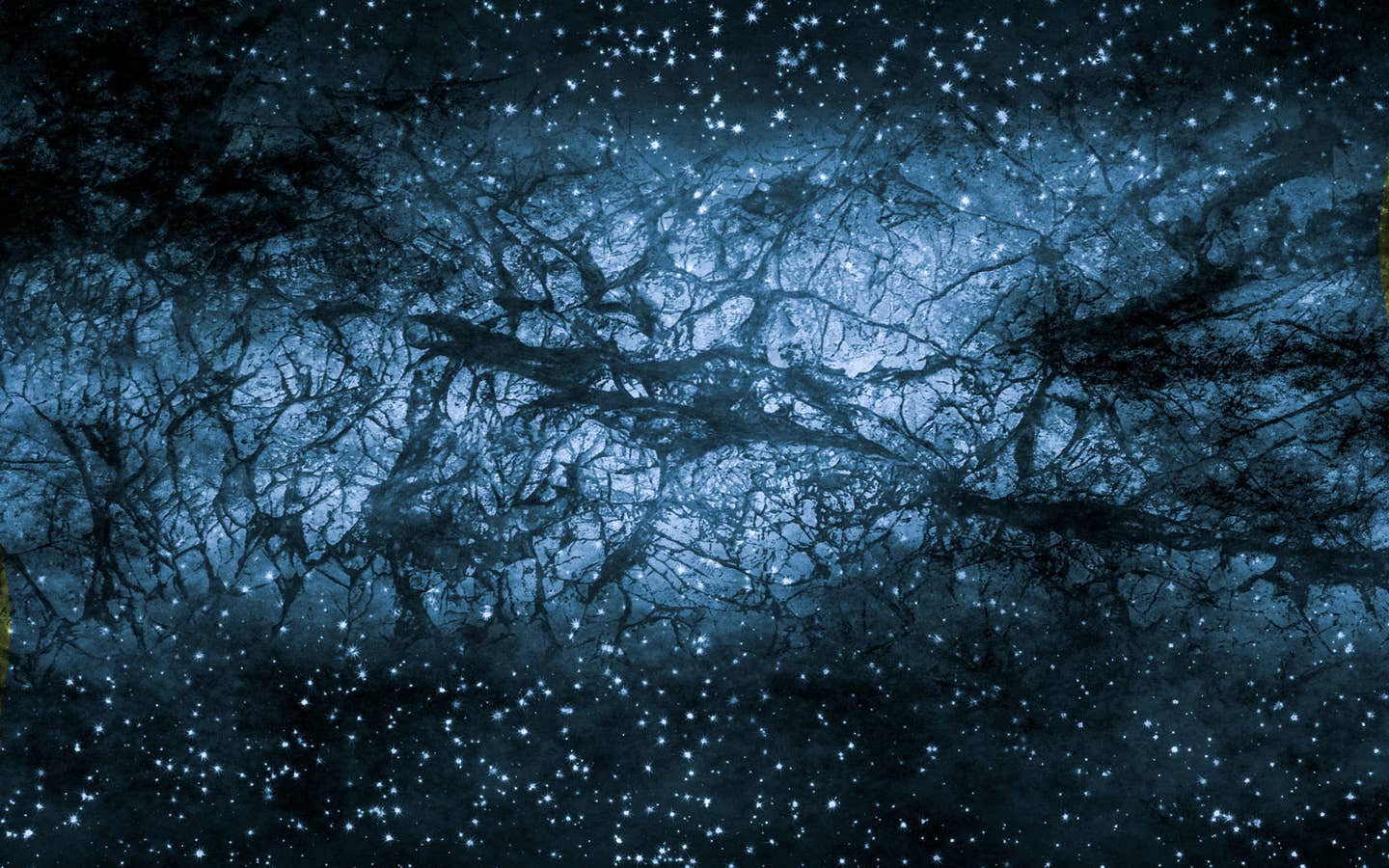Major discovery shines new light on the evolution of the universe
Despite making up 85% of the universe and influencing its evolution, dark matter has been hard to detect as it doesn’t interact with light.

[Apr. 12, 2023: Staff Writer, The Brighter Side of News]
Despite making up 85% of the universe and influencing its evolution, dark matter has been hard to detect because it doesn’t interact with light. (CREDIT: Creative Commons)
For centuries, humans have been fascinated by the mysteries of the cosmos, from ancient philosophers pondering the origins of the universe to modern cosmologists using sophisticated tools to study its evolution and structure.
Now, a team of researchers from the Atacama Cosmology Telescope (ACT) collaboration has created a groundbreaking new image that reveals the most detailed map of dark matter distributed across a quarter of the entire sky, extending deep into the cosmos.
Despite making up 85% of the universe and influencing its evolution, dark matter has been hard to detect because it doesn’t interact with light or other forms of electromagnetic radiation. As far as we know, dark matter only interacts with gravity.
To track it down, the more than 160 collaborators who have built and gathered data from the National Science Foundation’s Atacama Cosmology Telescope in the high Chilean Andes observe light emanating following the dawn of the universe’s formation, the Big Bang—when the universe was only 380,000 years old.
Related Stories
Cosmologists often refer to this diffuse light that fills our entire universe as the “baby picture of the universe,” but formally, it is known as the cosmic microwave background radiation (CMB).
The team tracks how the gravitational pull of large, heavy structures including dark matter warps the CMB on its 14-billion-year journey to us, like how a magnifying glass bends light as it passes through its lens.
“We’ve made a new mass map using distortions of light left over from the Big Bang,” says Mathew Madhavacheril, assistant professor in the Department of Physics and Astronomy at the University of Pennsylvania. “Remarkably, it provides measurements that show that both the ‘lumpiness’ of the universe, and the rate at which it is growing after 14 billion years of evolution, are just what you’d expect from our standard model of cosmology based on Einstein's theory of gravity.”
Researchers used the Atacama Cosmology Telescope to create this new map of the dark matter. The orange regions show where there is more mass; purple where there is less or none. The typical features are hundreds of millions of light years across. (CREDIT:
ACT Collaboration)
The results confirm Einstein’s theory of how massive structures grow and bend light, over the entire 14-billion-year life span of the universe. “We have mapped the invisible dark matter across the sky to the largest distances, and clearly see features of this invisible world that are hundreds of millions of light-years across,” says Blake Sherwin, professor of cosmology at the University of Cambridge, where he leads a group of ACT researchers. “It looks just as our theories predict.”
The study, published in the journal Physical Review Letters, presents the most precise measurements of the distribution of dark matter in the universe ever obtained, allowing cosmologists to better understand its role in shaping the cosmos.
Research by the Atacama Cosmology Telescope collaboration has culminated in a groundbreaking new map of dark matter distributed across a quarter of the entire sky, reaching deep into the cosmos. (CREDIT: Debra Kellner)
“These measurements provide a wealth of information about the universe’s history and growth,” says J. Richard Bond, a cosmologist at the University of Toronto, who was not involved in the study. “The ACT collaboration has built on a long tradition of careful measurement of the cosmic microwave background, and the exquisite sensitivity of their new measurements provides a new tool for exploring the universe.”
The Crisis in Cosmology
The team’s latest results from ACT were able to precisely assess that the vast lumps seen in this image are the exact right size, providing new insights into an ongoing debate some have called ‘The Crisis in Cosmology’. This crisis stems from recent measurements that use a different background light, one emitted from stars in galaxies rather than the CMB. These have produced results that suggest the dark matter was not lumpy enough under the standard model of cosmology and led to concerns that the model may be broken.
“When we first saw them, our measurements were in such good agreement with the underlying theory that it took me a moment to process the results,” says Cambridge Ph.D. student Frank Qu, part of the research team. “It will be interesting to see how this possible discrepancy between different measurements will be resolved.”
The team's results provide the most detailed and accurate picture yet of the distribution of dark matter in the universe, shedding new light on this elusive substance. The findings also have important implications for our understanding of the universe's evolution and structure.
“When we proposed this experiment in 2003, we had no idea the full extent of information that could be extracted from our telescope,” says Mark Devlin, the Reese Flower Professor of Astronomy at the University of Pennsylvania and the deputy director of ACT. “We owe this to the cleverness of the theorists, the many people who built new instruments to make our telescope more sensitive, and the new analysis techniques our team came up with.”
The Atacama Cosmology Telescope operated for 15 years and was decommissioned in September 2022. Nevertheless, more papers presenting results from the final set of observations are expected to be submitted soon, and the Simons Observatory will conduct future observations at the same site, with a new telescope slated to begin operations in 2024. This new instrument will be capable of mapping the sky almost 10 times faster than ACT.
Note: Materials provided above by The Brighter Side of News. Content may be edited for style and length.
Like these kind of feel good stories? Get the Brighter Side of News' newsletter.
Joseph Shavit
Head Science News Writer | Communicating Innovation & Discovery
Based in Los Angeles, Joseph Shavit is an accomplished science journalist, head science news writer and co-founder at The Brighter Side of News, where he translates cutting-edge discoveries into compelling stories for a broad audience. With a strong background spanning science, business, product management, media leadership, and entrepreneurship, Joseph brings a unique perspective to science communication. His expertise allows him to uncover the intersection of technological advancements and market potential, shedding light on how groundbreaking research evolves into transformative products and industries.



